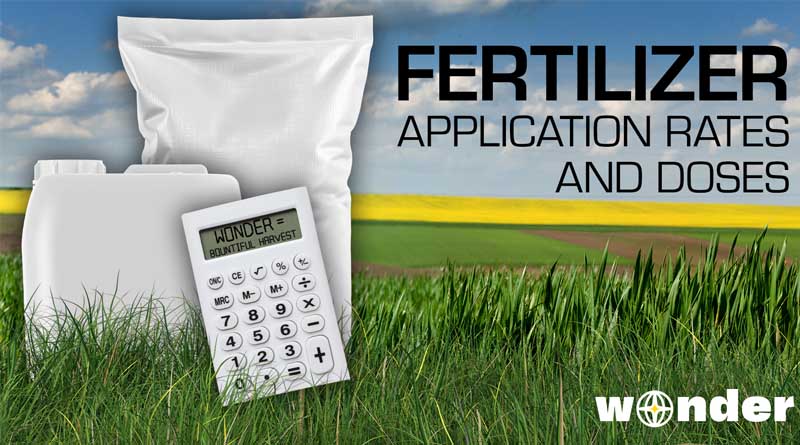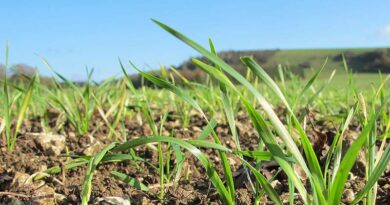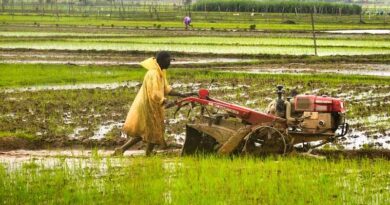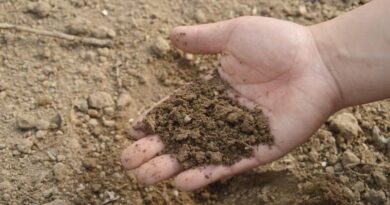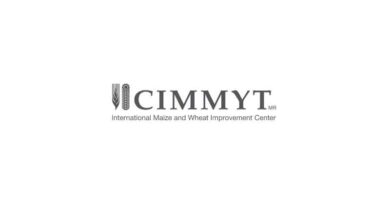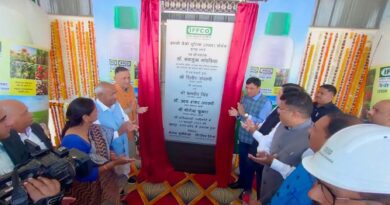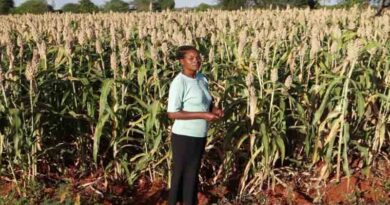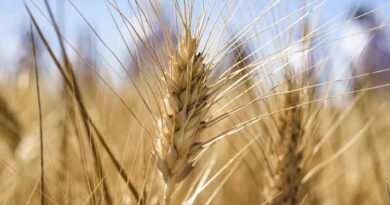Fertilizer Application Rates and Doses
Guest Author: Igor Kovalskiy, Wonder LLC – Ukrainian Manufacturer Of Foliar Fertilizers And Adjuvants, info@wonder-corporation.com
15 April 2024, New Delhi: We all know that the constant cultivation of crops without additional nutrients in the soil uses up its natural sources and affects yields. For this reason, it is important to add micro, macroelements and other plant nutrients from external sources for sustainable production.
The article talks about the different types of fertilizers, and how to calculate application rates and doses for different crops. You will also describe the rules that farmers follow and the methods of fertilization they use.
Fertilizer recommendations are made in elemental (e.g. S) or oxidized (e.g. SO3) forms of nutrients with different compositions. Based on the nutrient content of a particular fertilizer, the amount of material to be applied must be calculated.
What factors should be considered to calculate the correct fertilizer application rates and doses?
- Planned crop yield (we take into account the long-term yield of the crop in the region).
- Consumption characteristics of a particular variety or hybrid.
- Soil type and condition (includes indicators of granulometric composition, pH, and nutrient content).
Let’s look at some general recommendations for accurate determination of the optimal fertilizer application rate.
1. Mineral fertilizers:
Nitrogen fertilizers: In general, there are three forms of nitrogen and each form works differently.
- The nitrate form is very easily absorbed by the root system (this is the nitrogen that is immediately needed for plant consumption).
- The ammonium form is gradually absorbed by the plant, including the nitrate form at low temperatures.
- The amide form is the most prolonged effect of nitrogen in the soil (transition from amide to ammonium and then to nitrate). This process depends on temperature, moisture, and the microorganisms present in the soil. This form is best absorbed by the plant leaf surface. At the same time, foliar feeding should be applied in the evening and morning using Wonder Aqua True Cover. It is an adjuvant that helps plant protection products and fertilizers penetrate the leaf. This form of nitrogen can be converted into atmospheric nitrogen when it comes into contact with the photosynthetic activity of solar irradiation.
The fertilizer with the highest nitrogen content in the entire Wonder product line is Wonder Leaf Violet (N:P:K – 30:10:10).
The dose and rate of nitrogen fertilizers can range from 30 to 200 kilograms of active ingredient per hectare, depending on the type of crop and growing conditions. The amide form of nitrogen is used for foliar nutrition.
2. Phosphate fertilizers: Phosphorus in fertilizers is found in three groups of compounds, depending on their solubility in different solvents.
- Total phosphorus is all phosphorus in the fertilizer, regardless of the specific compound.
- Available phosphorus is the part of the total phosphorus that can be absorbed by plants during the growing season. The method of determination involves the selection of an extractant that “should” remove the part of the fertilizer phosphorus that the plant can absorb. Depending on the aggressiveness of the extractant, more or less phosphorus can be removed. Mostly, ammonium citrate (citric acid salt) is used to extract phosphorus, and the compounds are called citrate-soluble phosphorus.
- Water-soluble phosphorus is a phosphorus compound that passes into the water extract (is removed by water). This is the part of phosphorus that plants can absorb right now. It is the most interesting content of water-soluble phosphorus because it is mostly absorbed by the plant.
It is worth noting that the range of foliar fertilizers from the Ukrainian fertilizer manufacturer Wonder includes products with a sufficient amount of phosphorus for plants – Wonder Leaf Blue and Wonder Leaf Mono P 30.
The Indian phosphorus fertilizer market is expected to grow at a steady pace during the forecast period 2024-2028. The Indian phosphorus fertilizer market is driven by the growing need to ensure food security and meet the food demand of the ever-increasing population.
Phosphorus is usually used at a dose and rate of 20 to 100 kilograms of active ingredient per hectare, depending on the type of crop and growing conditions.
3. Potash fertilizers: Potassium compounds are divided into three groups based on their availability and mobility:
- Non-exchangeable potassium is a component of aluminosilicate minerals, feldspars and mica. This potassium is not readily available to plants, but under the influence of temperature, microorganisms and water, minerals are destroyed during weathering and gradually converted into soluble potassium salts.
- Exchangeable potassium – connected by soil colloids. This potassium is able to easily pass into solution in the process of exchange with other cations, making it readily available to plants. If the plants have absorbed all the potassium from the soil solution, it is replenished with new supplies of this nutrient from colloids. The amount of exchangeable potassium in the soil solution is usually an indicator of the soil’s supply of available potassium.
- Water-soluble potassium is represented in the soil by salt solutions (nitrates, phosphates, chlorides, carbonates, potassium sulfates) that are suitable for direct absorption by plants.
Fertilizers that will help your plants get rid of potassium deficiency – Wonder Leaf Red and Wonder Leaf Mono K 30 (contain chlorine-free potassium).
In general, the dose and rate of potash fertilizers can range from 30 to 150 kilograms of active ingredient per hectare. This is regardless of the type of crop and growing conditions.
Organic fertilizers:
Natural compost is an organic fertilizer produced by the decomposition of organic matter by microorganisms. It is usually applied in a dose of 5-20 tons per hectare, regardless of the compost quality.
Manure is animal excrement mixed with bedding that is rotting. The dose of manure can be 5-40 tons per hectare, depending on the type of manure (chicken, cow, etc.) and the age of the plants.
The Indian organic fertilizer market was valued at USD 577.10 million in 2023 and is expected to reach USD 942.39 million by 2032, at a CAGR of 5.6% during the forecast period from 2023 to 2032.
Foliar feeding:
Another equally important impact on plants is foliar nutrition (foliar). This method allows you to correct elements in the plant (while soil elements are temporarily unavailable) or to provide elements that are in short supply with changes in the physiological state of plants during the most critical periods of growth and development.
Doses of foliar fertilizers are smaller than those for the root system. It is usually recommended to add 0.5-2% fertilizer by weight of water (5-20 grams of fertilizer per liter of water).
To understand what plant growth depends on and to identify the real “limiting factors”, we recommend that you familiarize yourself with Liebig’s Law of the Minimum.
Fertigation:
The composition and concentration of soil salts are important. Plant roots are able to absorb nutrients at low concentrations, approximately from 0.03-0.05 to 0.1-0.2%. At a concentration above 0.2%, the plant’s absorption capacity of water and nutrients slows down dramatically, which leads to a loss of turgor (lethargy) in plants. This process is observed on saline soils.
The entire line of fertilizers from the Ukrainian manufacturer Wonder is intended for fertigation applications.
It is important to remember that exceeding fertilizer doses can lead to environmental pollution and reduced product quality. That is why before applying any fertilizer, you must fully read the manufacturer’s instructions and recommendations, or contact agronomists for individual recommendations.
To correctly calculate the doses, rates, and forms of fertilizers, you need to conduct an agrochemical analysis of the soil.
Also Read: The Dominance of Lok-1: Madhya Pradesh’s Leading Wheat Variety(For Latest Agriculture News & Updates, follow Krishak Jagat on Google News)

